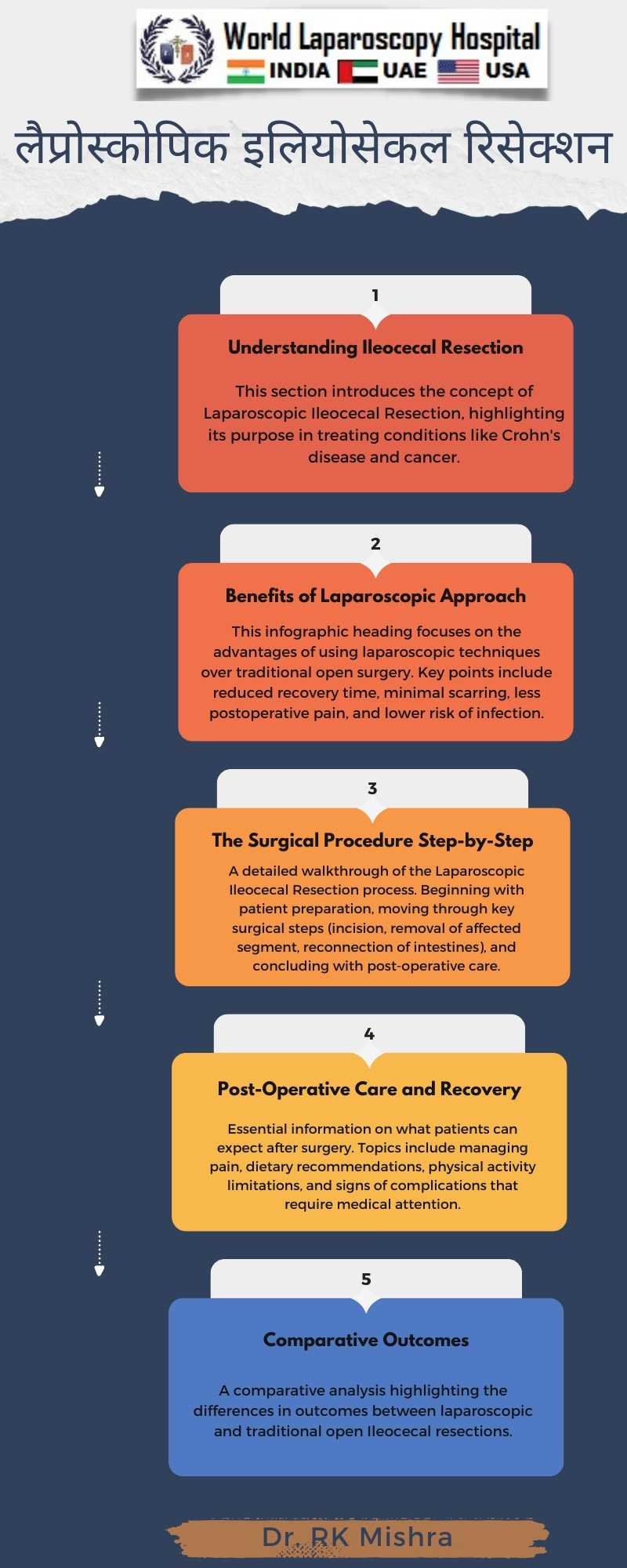Advancements and Techniques in Laparoscopic Ileocecal Resection
Advancements and Techniques in Laparoscopic Ileocecal Resection
Laparoscopic ileocecal resection has emerged as a revolutionary technique in the field of minimally invasive surgery. This procedure, primarily used to treat diseases affecting the ileum and cecum, such as Crohn's disease or cancer, has significantly evolved over the years. With advancements in technology and surgical expertise, the approach to laparoscopic ileocecal resection has become more refined, offering numerous benefits over traditional open surgery.

Historical Context and Evolution
The journey of laparoscopic ileocecal resection began in the late 20th century, following the success of laparoscopic techniques in other surgical areas. Initially, the approach was met with skepticism due to concerns about its safety and efficacy. However, as technology advanced and surgeons gained more experience, laparoscopic ileocecal resection became a preferred method due to its minimally invasive nature.
Technological Advancements
The introduction of high-definition cameras and improved surgical instruments has greatly enhanced the precision of laparoscopic procedures. Surgeons can now view the surgical field with remarkable clarity, allowing for more accurate dissection and resection. Robotic-assisted laparoscopic surgery is another significant advancement. Robots provide surgeons with superior dexterity and control, further reducing the risk of complications and improving patient outcomes.
Enhanced Recovery Protocols
The adoption of Enhanced Recovery After Surgery (ERAS) protocols has transformed postoperative care. These protocols, tailored specifically for laparoscopic ileocecal resection, focus on reducing surgical stress and promoting faster recovery. Key elements include early mobilization, optimized pain management, and early enteral nutrition, all contributing to shorter hospital stays and improved patient satisfaction.
Surgical Technique Refinements
Over time, the techniques in laparoscopic ileocecal resection have been refined to minimize tissue trauma and improve outcomes. This includes the use of energy devices that provide precise cutting and coagulation, reducing blood loss. The approach to mobilizing the ileocecal region and the method of anastomosis (connection between the ileum and the remaining bowel) have also seen significant improvements, leading to reduced operative times and lower complication rates.
Training and Simulation
With the complexity of laparoscopic ileocecal resection, training and simulation have become crucial. Surgeons now have access to virtual reality (VR) and simulation-based training, which allows them to hone their skills in a risk-free environment. This has not only improved surgical proficiency but also patient safety.
Future Directions
The future of laparoscopic ileocecal resection is promising, with ongoing research and innovation. Areas of focus include the development of more advanced robotic systems, the integration of artificial intelligence for enhanced decision-making, and the exploration of less invasive techniques like single-port laparoscopy.
Conclusion
The advancements and techniques in laparoscopic ileocecal resection represent a significant leap in surgical care. With ongoing technological innovations, refined surgical techniques, and a focus on patient-centered care, this minimally invasive approach continues to set new standards in the treatment of ileocecal diseases. As we look to the future, these advancements promise even greater improvements in surgical outcomes and patient quality of life.
Laparoscopic ileocecal resection has emerged as a revolutionary technique in the field of minimally invasive surgery. This procedure, primarily used to treat diseases affecting the ileum and cecum, such as Crohn's disease or cancer, has significantly evolved over the years. With advancements in technology and surgical expertise, the approach to laparoscopic ileocecal resection has become more refined, offering numerous benefits over traditional open surgery.

Historical Context and Evolution
The journey of laparoscopic ileocecal resection began in the late 20th century, following the success of laparoscopic techniques in other surgical areas. Initially, the approach was met with skepticism due to concerns about its safety and efficacy. However, as technology advanced and surgeons gained more experience, laparoscopic ileocecal resection became a preferred method due to its minimally invasive nature.
Technological Advancements
The introduction of high-definition cameras and improved surgical instruments has greatly enhanced the precision of laparoscopic procedures. Surgeons can now view the surgical field with remarkable clarity, allowing for more accurate dissection and resection. Robotic-assisted laparoscopic surgery is another significant advancement. Robots provide surgeons with superior dexterity and control, further reducing the risk of complications and improving patient outcomes.
Enhanced Recovery Protocols
The adoption of Enhanced Recovery After Surgery (ERAS) protocols has transformed postoperative care. These protocols, tailored specifically for laparoscopic ileocecal resection, focus on reducing surgical stress and promoting faster recovery. Key elements include early mobilization, optimized pain management, and early enteral nutrition, all contributing to shorter hospital stays and improved patient satisfaction.
Surgical Technique Refinements
Over time, the techniques in laparoscopic ileocecal resection have been refined to minimize tissue trauma and improve outcomes. This includes the use of energy devices that provide precise cutting and coagulation, reducing blood loss. The approach to mobilizing the ileocecal region and the method of anastomosis (connection between the ileum and the remaining bowel) have also seen significant improvements, leading to reduced operative times and lower complication rates.
Training and Simulation
With the complexity of laparoscopic ileocecal resection, training and simulation have become crucial. Surgeons now have access to virtual reality (VR) and simulation-based training, which allows them to hone their skills in a risk-free environment. This has not only improved surgical proficiency but also patient safety.
Future Directions
The future of laparoscopic ileocecal resection is promising, with ongoing research and innovation. Areas of focus include the development of more advanced robotic systems, the integration of artificial intelligence for enhanced decision-making, and the exploration of less invasive techniques like single-port laparoscopy.
Conclusion
The advancements and techniques in laparoscopic ileocecal resection represent a significant leap in surgical care. With ongoing technological innovations, refined surgical techniques, and a focus on patient-centered care, this minimally invasive approach continues to set new standards in the treatment of ileocecal diseases. As we look to the future, these advancements promise even greater improvements in surgical outcomes and patient quality of life.
No comments posted...
| Older Post | Home | Newer Post |

